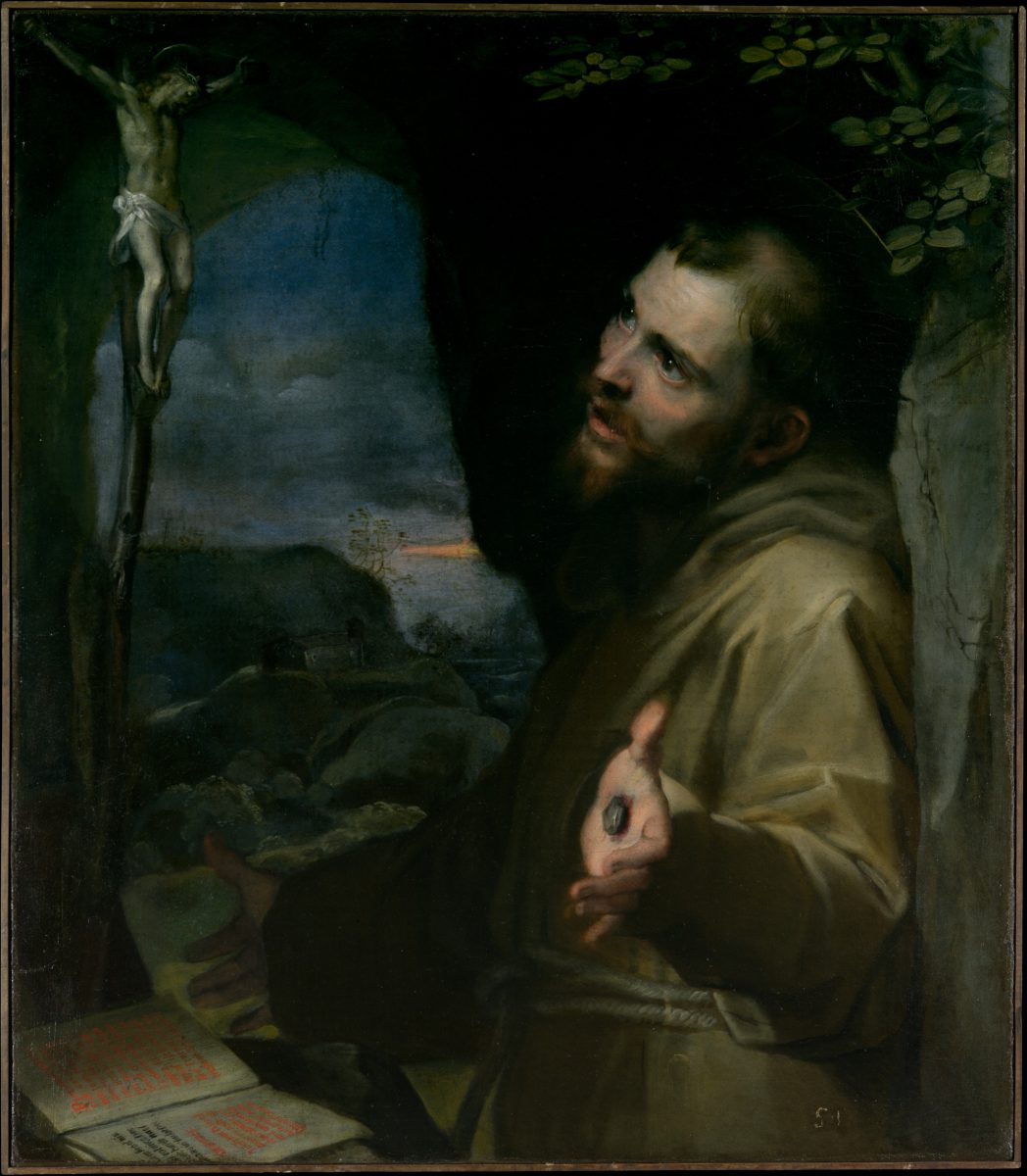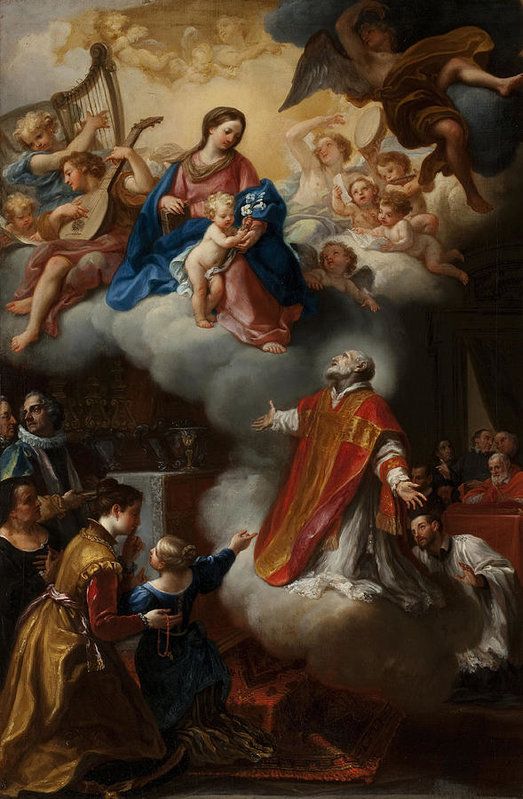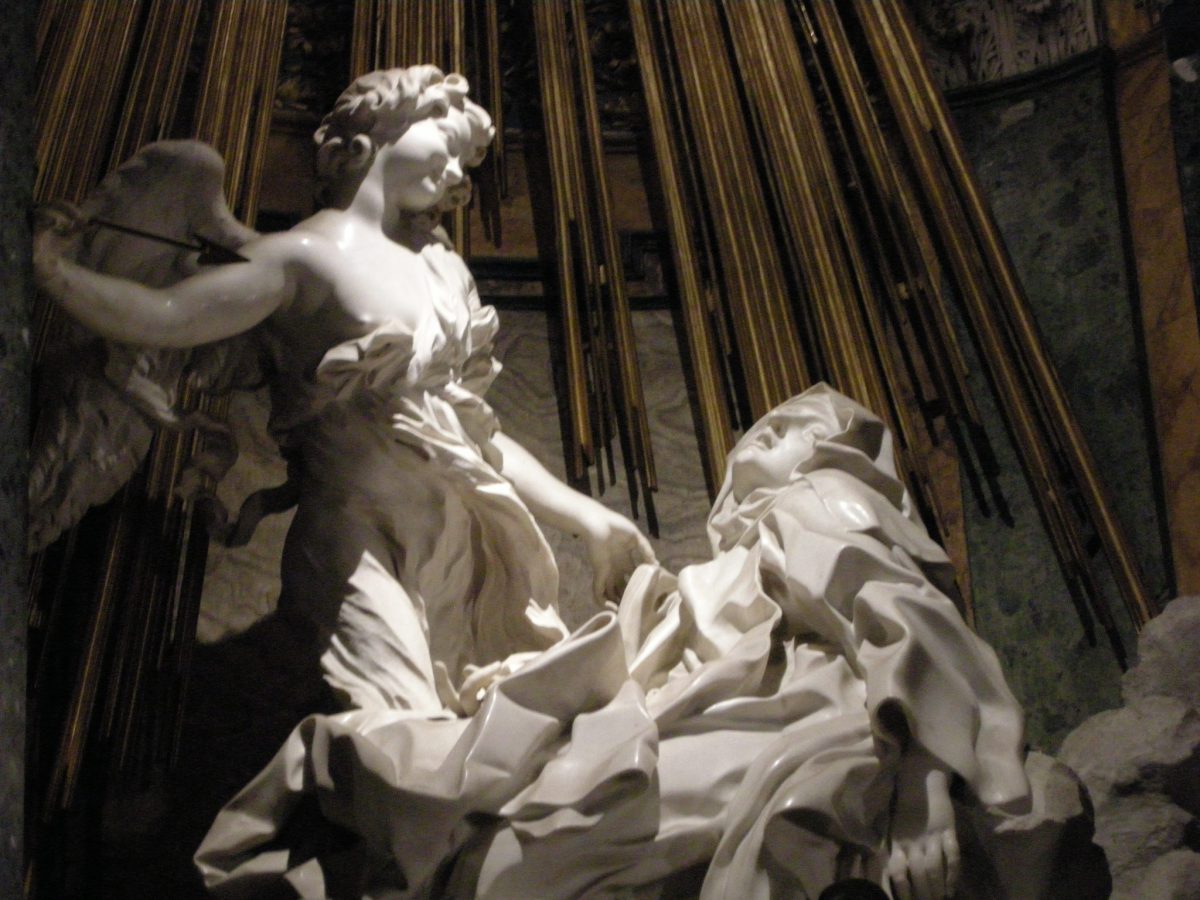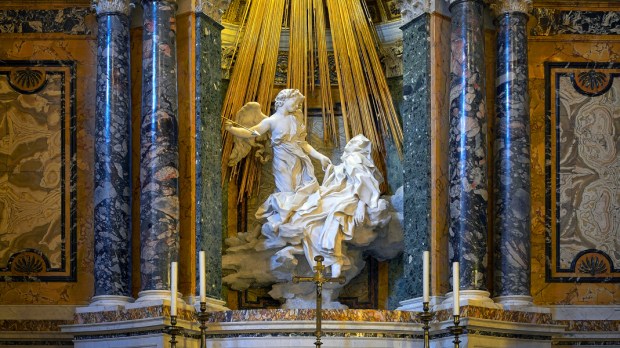Lenten Campaign 2025
This content is free of charge, as are all our articles.
Support us with a donation that is tax-deductible and enable us to continue to reach millions of readers.
[On the 500th anniversary of the Protestant Reformation, this series of articles looks at how the Church responded to this turbulent age by finding an artistic voice to proclaim Truth through Beauty. Each column visits works of art to looks at how the iconography was designed to confront a challenged raised by the Reformation with the persuasive voice of art. – Ed]
If there were any category of Catholics that the Protestant reformers viewed with maximum skepticism it was those mystics who experienced visions of divine union. It wasn’t that the Protestants eschewed closeness to Christ through prayer—John Calvin even drew from St. Bernard of Clairvaux when developing his ideas of “election” with its deep, personal, certitude of salvation—but they recoiled at the “excesses” of the Catholic Church. The Protestants saw mystic experience as a quiet, peaceful assurance, while the Catholics had more flair for the dramatic.
Catholic mysticism was deeply-rooted, passionate, and often described in physical or even sensual terms. Literature, art and music tended to portray mystical transport as intense and fleeting, an overwhelming foretaste of the peace and joy that is to come. Medieval scholars defined mystical theology as “the experiential knowledge of God thorough the union of spiritual affection with him.” This “affection,” or perhaps this more naked realization of God’s love, left at times more than just spiritual or intellectual awareness, but also physical marks like the stigmata. The body, made in the image and like of God, and assumed by God-made-man, shared the experience of divine love with the soul, at which point the Catholics and the Protestants parted ways.
As Protestants increasingly subsumed knowledge of God into the intellectual sphere, Catholic art strove to manifest the experiential, even the sensual nature, of oneness with the Lord. Art was especially equipped to be of service for this challenge, since it was already expected to excite piety by stimulating the sense of sight.
After the Reformation, the Catholic Church increased its commemoration of mystics, both on the altars and in art. Thanks to the finest painters, the visions of Mary Magdalene de’ Pazzi, Aloysius Gonzaga and a rapt St Ignatius became a common sight above the altars. Even older saints with more established iconography found a new attitude, reminding the faithful that long before the Reformation saints had basked in the Lord’s consuming love.

Portrayals of St. Francis of Assisi changed dramatically from the tree-hugging, wolf-taming, bird-preaching saint to the ecstatic recipient of the Lord’s stigmata. Many artists, from Carracci to Caravaggio, represented Francis in this transported state, but Barocci’s St. Francis has an unexpected and arresting power. Close to the Capuchin order (indeed buried in their church in Urbino), Barocci had a personal devotion to St Francis that permeates the work. Cramped in a tight, almost tomb-like cave, Francis stands at the narrow passageway between the viewer and the mysterious expanse beyond. He has started his prayer with scripture—the Bible lies open before him—but he has turned his mind and heart towards the crucified Christ before him. Here the dull grays and browns of mortality recede as Francis gazes at the crucifix, shining with inner energy. Eyes glistening, the saint shares an intimacy with the suffering Christ that transforms the cross from an inanimate object to a modeled body leaning towards the open-armed Francis. It is intimate, intense, and real .Francis’ foreshortened hand projects towards the viewer, and the hard iron stud in his hand takes this vision out of the realm of mere intellectual fascination into tangible reality.

St. Philip Neri offered a combination of shrewd practicality, jolly humor and intense visionary experience that artists found irresistible. One day he would tell a young man to wear a fox tail as penance to curb his vanity, the next he would allow dogs into church to tame their lazy owners, and then he would levitate before the altar, absorbed in the love of Christ’s presence. Painter Marco Benefial captured all the amazement of the supernatural erupting into the everyday in his Vision of St Philip Neri. As a fair-haired child pulls away in fear, exclaiming “Look! That man is possessed by the devil!” her mother rebukes her: “That man is a saint and he is in ecstasy.” Benefial pulled Philip Neri’s ecstatic state out of the caverns and into the open by including witnesses and bystanders. Many people had seen him transported and were converted by the sight, but that little girl closest to the viewer makes us wonder what our reaction would be in the presence of such an overt and uncomfortable display of divine love.
Benefial calls the senses into play with the sound of the music, the scent of the lily, the taste of the Eucharistic wine. The physical elevation of the saint takes place as he consecrates the host. The natural world and the divine intertwine in a moment of ravishing beauty – not to be feared or distrusted but devoutly to be desired. Art allows us to live, albeit distantly, this extraordinary encounter.
But GianLorenzo Bernini crafted the image of mysticism that would be more disturbing to Protestants than any other, the Ecstasy of St. Teresa. Begun twenty years after Teresa of Avila’s canonization, this work combined painting, sculpture and architecture to re-create the saint’s well-documented experience of ecstasy. Situated in the Cornaro chapel in Santa Maria della Vittoria (built to celebrate a 1618 Catholic victory over Protestant forces), the space is veneered in red jasper, evoking the world of the flesh. While sculpted portraits of the Cornaro family occupy the lateral galleries, the viewer stands at center stage as the red gives way to a small space bathed in light, reminiscent of a theater stage. There, Teresa is suspended, like a special effect in a modern movie, reclining on a cloud as an angel lifts her robe, flaming dart in hand. In the words of the saint herself, he was
“…thrusting it at times into my heart, and to pierce my very entrails; when he drew it out, he seemed to draw them out also, and to leave me all on fire with a great love of God. The pain was so great, that it made me moan; and yet so surpassing was the sweetness of this excessive pain, that I could not wish to be rid of it. The soul is satisfied now with nothing less than God. The pain is not bodily, but spiritual; though the body has its share in it.”

Natural light baths the sacred scene from a hidden window above the group and above the that, there is a dove frescoed on the vault. This vision, deeply personal, yet revealed in the Spanish saint’s writings, becomes visible to us thanks to the creativity of Bernini. This devoutly faithful artist grew up at the cosmopolitan court of Pope Paul V where Galileo arrived to demonstrate his telescope. As science gave man a way to see the invisible bodies of nature, so Bernini became the means through which man could see the invisible movement of the spirit.
The work was so compelling, and such a powerful argument for the Catholic experience of Divine love, that detractors soon set in to undermine it, from critiquing Bernini’s skill to suggesting that the work carried another, more profane meaning. Later centuries seemed so distanced from the concept of divine love that they could only see of a very earthly form of desire in the work. Whether the sophisticated “nudge, nudge, wink, wink” of a French dignitary de Brosse or with disingenuous marveling of a Stendhal at “clever Bernini” for sneaking an erotic scene into a church, the uplifting illustration of divine union has been whittled away to Dan Brown’s absurd observation in Angels and Demons: “Pope Urban VIII had rejected The Ecstasy of St. Teresa as too sexually explicit for the Vatican.”
Ex stasis—the experience of being taken outside oneself—previews heaven, where the resurrected body together with the soul will be united with God, and all the efforts and labors of holiness will be rewarded. Teresa’s face, emulating that of Christ in Michelangelo’s Pieta, is the ultimate image of total self-offering to God, and knowledge, through these moments of ecstasy, that that love is requited. John Calvin knew what he was rejecting when he preferred the peace of enlightenment over the passion of ecstasy, but our modern culture seems so tragically lost in the immediacy of bodily pleasure it lacks the capacity to even think about divine love.
And thus the Counter-reformation provides a remedy not only for the excesses of the zealous Reformers, but for our jaded and materialistic age as well.

